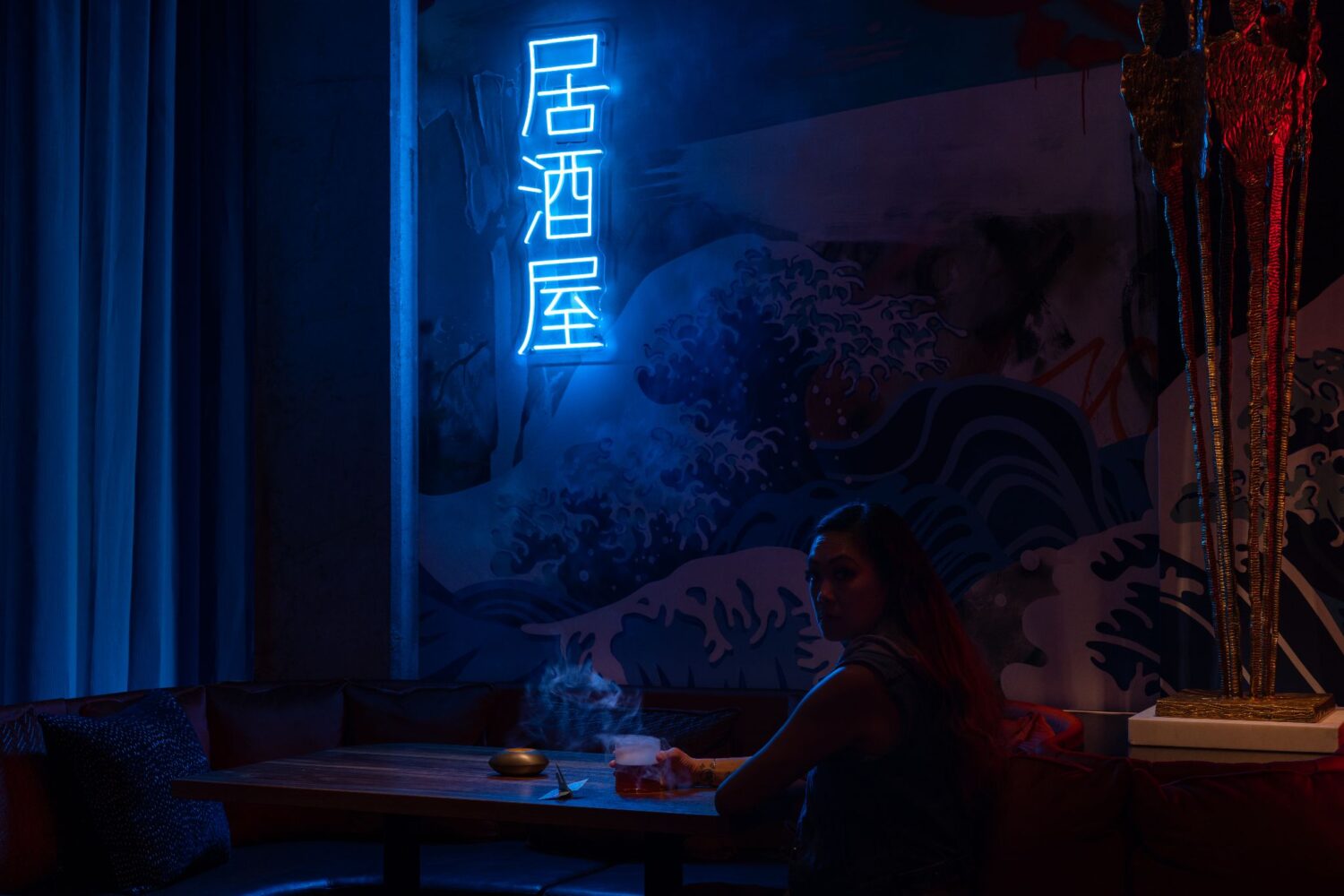
Photograph by Renée Comet.
“Sourcing” has become such a buzzword in food circles that a diner can be forgiven for thinking that good shopping equates with good cooking. Good raw materials are a start; it takes skill to turn them into great dishes.
Not so with sushi, the most reductive of the world’s cuisines, the least hospitable to experimentation and half measures. The raw materials aren’t just the beginning; they’re pretty much the middle and end, too.
Stories abound of the rigorous training required of sushi chefs, the years spent mastering the knife skills to reduce hulking sea creatures into sheer, delicate bands and learning to produce well-seasoned pads of rice that manage to preserve the integrity of each grain while still holding together. Those skills are crucial, but none is as important as a chef’s willingness to blow a small fortune to procure the freshest, most exquisite fish.
These days, that means buying from Japan, which is why the best sushi restaurants in the country are so exorbitant.
In Manhattan, flying in fish from Tokyo’s famed Tsukiji market—a frenzied auction that could make you think you’ve wandered onto the floor of the New York Stock Exchange—has become the rule for the premier sushi bars. No restaurant in this area had made far-flung shopping the centerpiece of its menu until late last year when Nobu Yamazaki shuttered Sushi Taro, the place his father opened 23 years ago on a quiet block of 17th Street east of Dupont Circle, and reconceived it as a house of worship for raw-fish connoisseurs.
Sushi Taro was a clamorous, low-key destination for an agreeable meal, a neighborhood spot perched above a CVS where moviegoers feasted on salmon and tuna as they chatted earnestly about sound design and lighting and where young politicos knocked back shot glasses of sake at the city’s longest sushi bar while pretending to get away from it all. It was good sushi—satisfying but not special.
The new place is smaller (seating has been cut from 120 seats to 70), more serene (the mood resembles a spa, right down to the annoying New Age music), and to the dismay of many longtime patrons, profoundly expensive. A friend of mine, who used to live several blocks away, reacted to news of the renovation as if someone had ransacked his childhood home: “They took this place I loved and turned it into something else. I can’t afford it anymore.”
That’s the great danger in undertaking such a radical 180, particularly amid an economic downturn, when so many diners are on the hunt for bargains. But what the new Sushi Taro has lost in becoming a dining destination it aims to make up for with curiosity seekers and foodies. The restaurant may not be dining nirvana, but at its best it’s not just profoundly expensive; it’s also profoundly exquisite.
Consider the selection of o-toro I feasted on one night. Also known as premium fatty tuna—it’s cut from the tender belly of the fish—it costs $27 for six pieces, about the price of an entrée at most upmarket restaurants. Is it worth it? That depends on how tired you are of the mealy, tasteless tuna that most restaurants have been serving in recent years as the world’s tuna supply has diminished. One bite and I was reminded of the sensuality of this rich fish, with its burst of oceanic freshness on the tongue.
The fatty tuna is the heaviest hitter in the new lineup, but other varieties are no less memorable. Isaki grunt fish, kinmedai alfonsino snapper, and ayu sweet summer fish—three fish you won’t see anywhere else in town, all delivered from the Tsukiji market via a distributor—were delicate, shimmering, and sweet. I’d recently been turned off of uni, having consumed too many second-rate presentations; uni is good only if it’s great, and this one is: bracing, clean, creamy.
More-conventional options such as eel, yellowtail, and salmon are so alive-tasting you’d think they’d been taken from the deep only hours earlier. The sweet shrimp, perched atop a tiny pillow of rice, was the most exquisite I’ve ever eaten. All make the prospect of returning to your neighborhood sushi bar a comedown.
The restaurant offers four ways to buy: à la carte, in which you make your own selections; omakase, in which you put your courses in the hands of the sushi bar; a tasting menu of sushi or sashimi; or a ten-course kaiseki menu that accessorizes a chef-chosen selection of raw fish with salads, soups, and snacks. If you want to know which is most affordable, forget it. It’s simply not possible to eat and drink well for less than $250 for two.
What you can count on, though, is an experience so thought through, so detailed that it seems designed to make a point about the purity of eating sushi. Sashimi is served in a colander-like bowl atop a fan of bamboo leaves spread over ice cubes; heat is the enemy of raw fish, and the kitchen is alert to the perils of having it reach room temperature as you eat. A live scallop I ordered one night was so fresh it seemed to pucker as I touched it with my chopstick. Powdered wasabi is nowhere in evidence; the kitchen grates its own. You’ll find it on orders of sashimi but not on the long planks of nigiri; the sushi chefs do the seasoning themselves, painting the bands of fish with nikiri, a boiled sauce made of soy, sake, and carp that’s a standard sushi condiment in Japan. Similar to a New York strip that’s been highly seasoned with crusted black pepper and coarse salt, the nikiri-swabbed fish hardly needs dabbing in soy at the table.
The problem with this degree of detail is that it exposes the weaknesses in the rest of the operation. It’s as if Yamazaki believed he only had to shop at the finest fish market in the world to compete with the best restaurants in town. The sake list is strong, but the wine list doesn’t encourage the same exploration at a time when some of the nation’s best sushi restaurants are broadening their lists and proving that a good Burgundy or Pinot Gris can be as fine a match for raw fish as a shot of fermented rice wine.
Fewer tables means diners no longer have to elbow their way through the hordes of customers, but now you might have to spend an afternoon dialing to get a reservation. On every visit, I wondered who was minding the store. One Saturday night, my wife and I stood waiting for several minutes before a hostess emerged to greet us brusquely: “Just hold on—one second, please.”
Once we were seated, we shared a menu until we asked for another. Another night, we had to move—and sometimes stack—our own plates as courses piled up without regard to pacing. It seemed a punishment of sorts for ordering à la carte.
We regretted it that night, but I’ve since come to the conclusion that a little pileup and self-pacing is preferable to entrusting the kitchen with putting together a meal that ranges far beyond sushi and sashimi.
That’s not to say there isn’t the occasional reward. The luscious slices of fat-striated Kobe beef imparted the richness of a steak for a fraction of the chewing—and a fraction of the calories. A friend of mine, disillusioned by the countless Kobe imitations around town—often just Wagyu masquerading as Kobe—asked, “How do we know it’s the genuine article?”
“How do we know?” I replied. “We know because it’s eight Band-Aid–size slices for $30.”
A simple dish of marinated baby squid showed both a gift for smart shopping and a willful ignorance of American tastes. I can imagine many diners turning away—the squid almost resemble fetuses—but they make for a fascinating starter, a meaty, tangy prelude to the sweet, delicate fish to come.
But the tempura is nothing you couldn’t find elsewhere; the charcoal-grilled chicken, cooked at the table, didn’t live up to the spectacle; a dish of salted white snapper jaw—complete with bared teeth—was luscious in places and dry in others; and a plate with a few small dabs of salty, spicy pollock roe seemed to trade more on novelty than on taste.
And what’s a slice of outsourced chocolate cake (from the nearby bakery Locolat) doing on the dessert menu of a restaurant that prides itself on giving its customers the most authentic experience possible? The house-made desserts—including a black-sesame crème brûlée, delicately fashioned mochi, and a corn ice cream with caramel syrup that’s like eating semi-frozen caramel corn—are excellent, setting a new standard for the area.
For all its surface polish, and despite its self-important air of seriousness, Sushi Taro remains a work in progress. It took a bold first step in making shopping the center of its mission, in the process raising expectations for every other sushi restaurant. With better service and more attentive cooking, it might become the place it aspires to be. I don’t see that happening anytime soon, but Yamazaki has achieved a great deal in reaching beyond his grasp.
Sushi Taro may not be a great restaurant that transcends category, but it’s the best sushi bar in the area. And not by a little.
This review appears in the August, 2009 issue of The Washingtonian.










